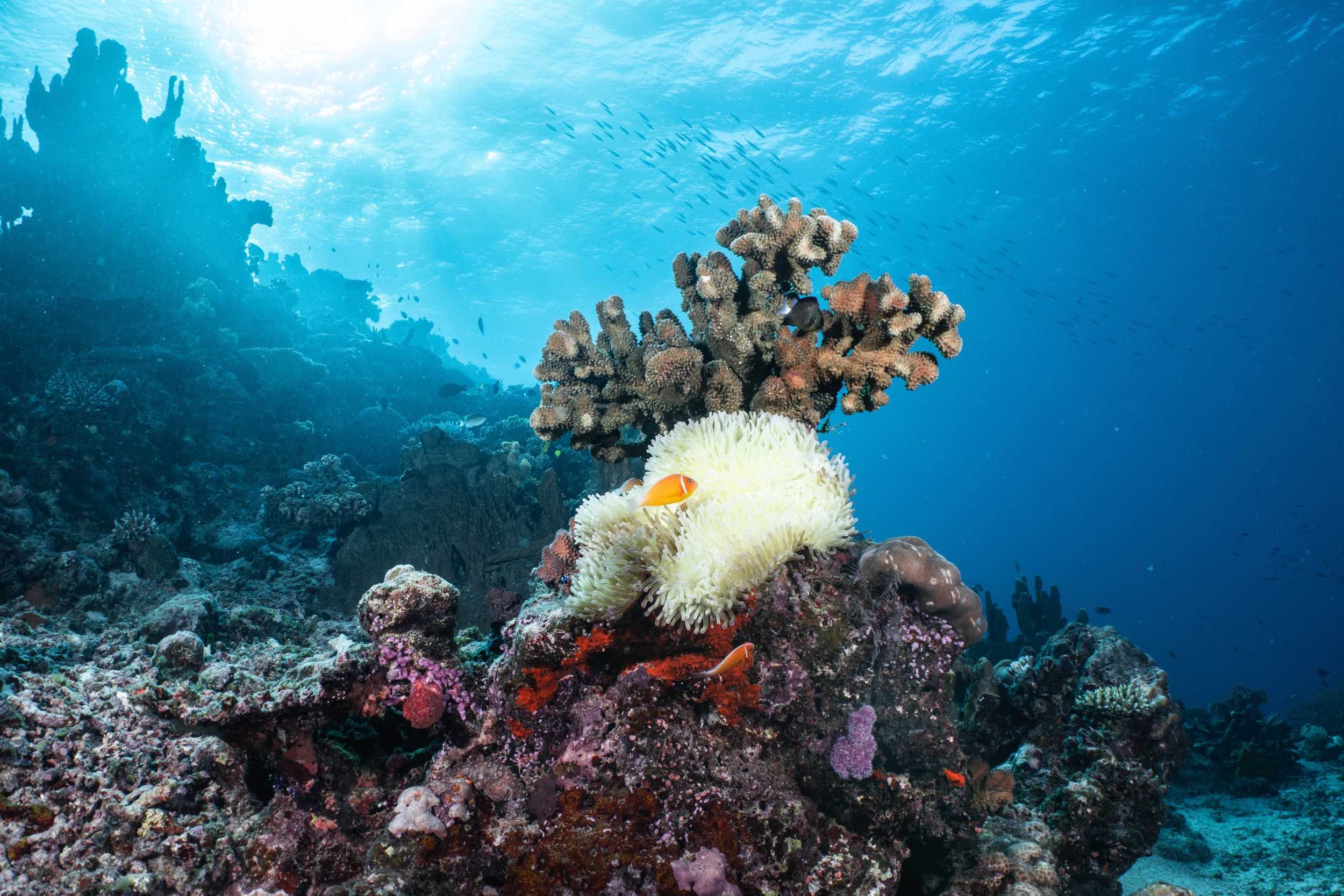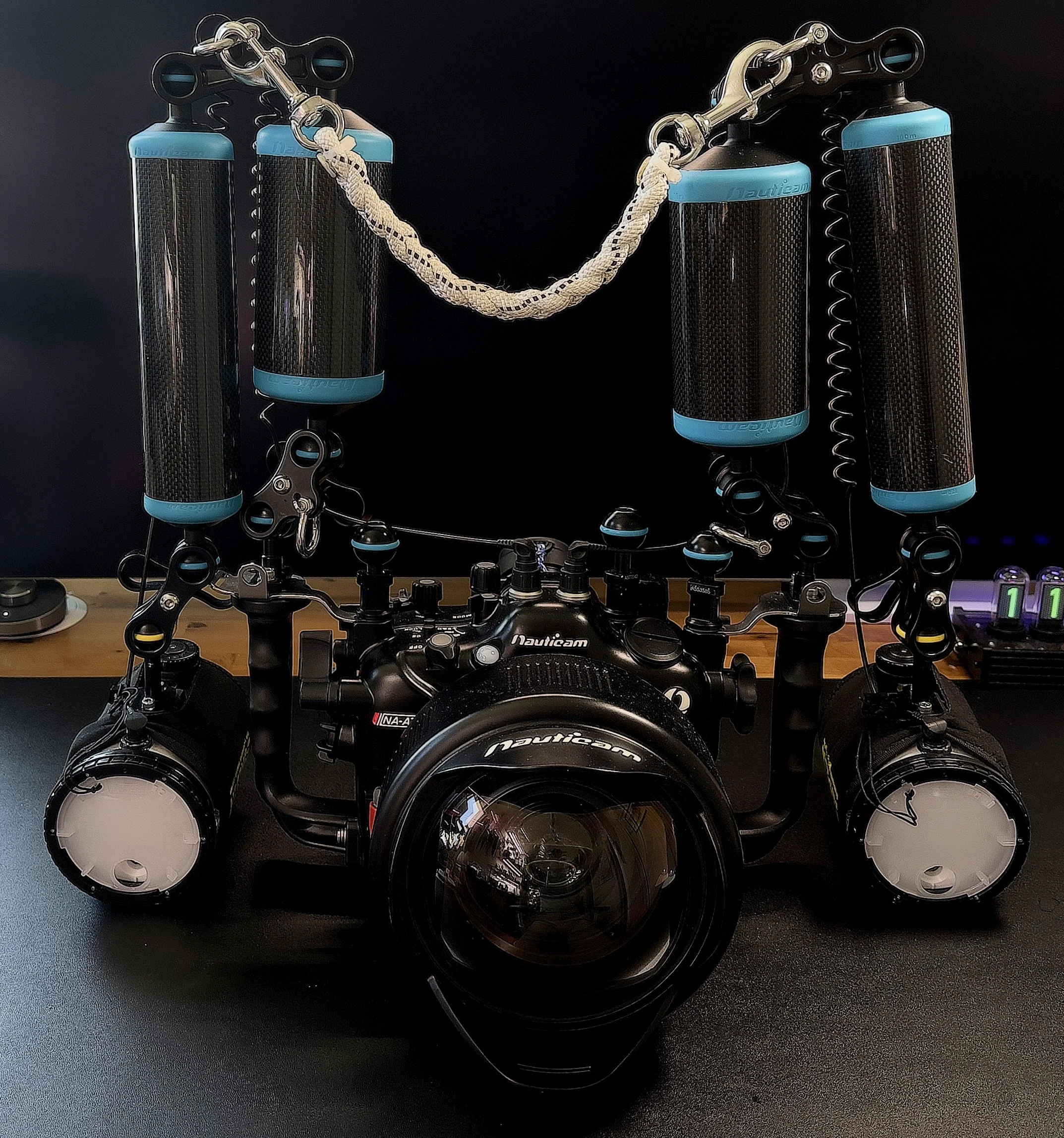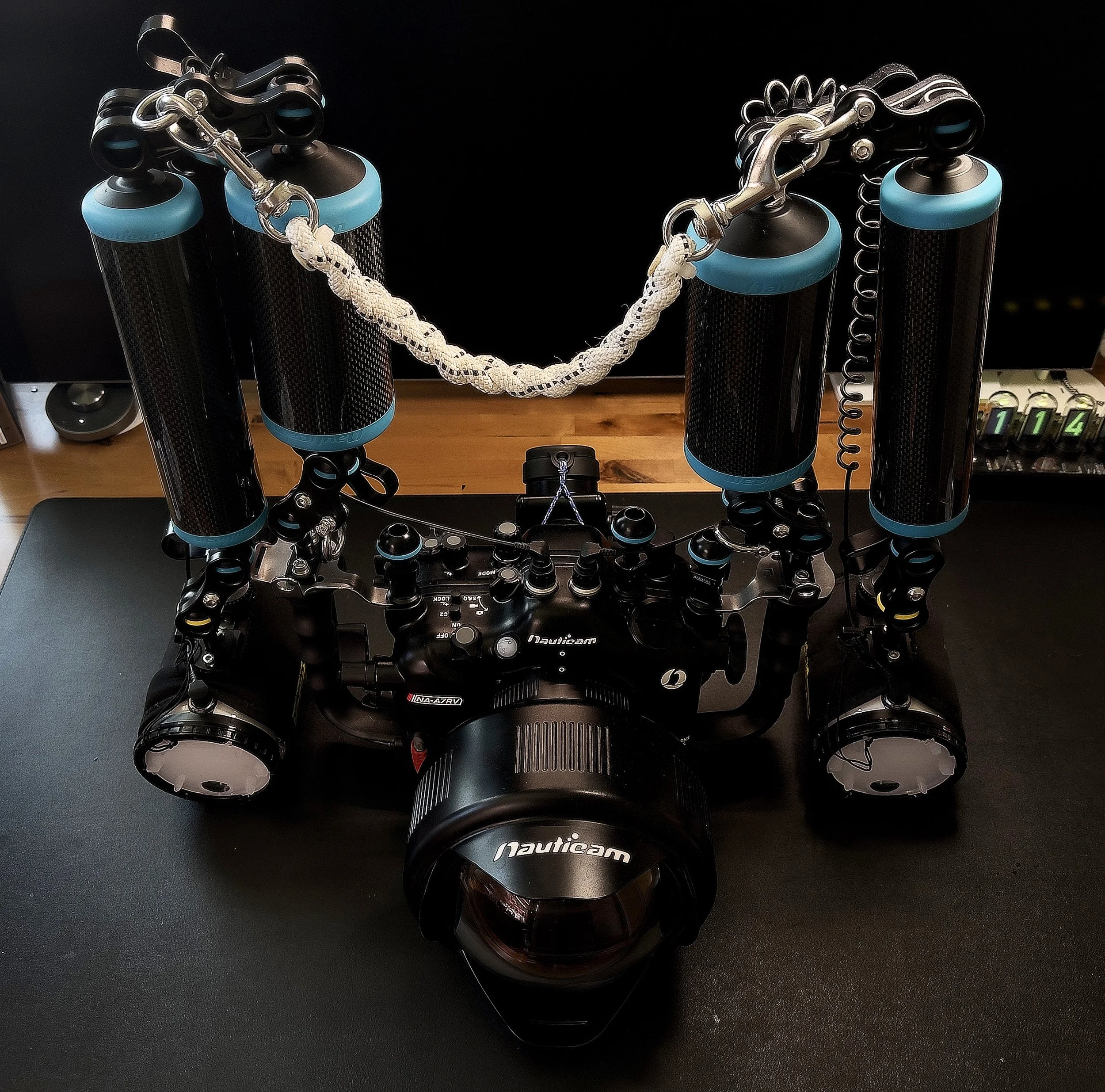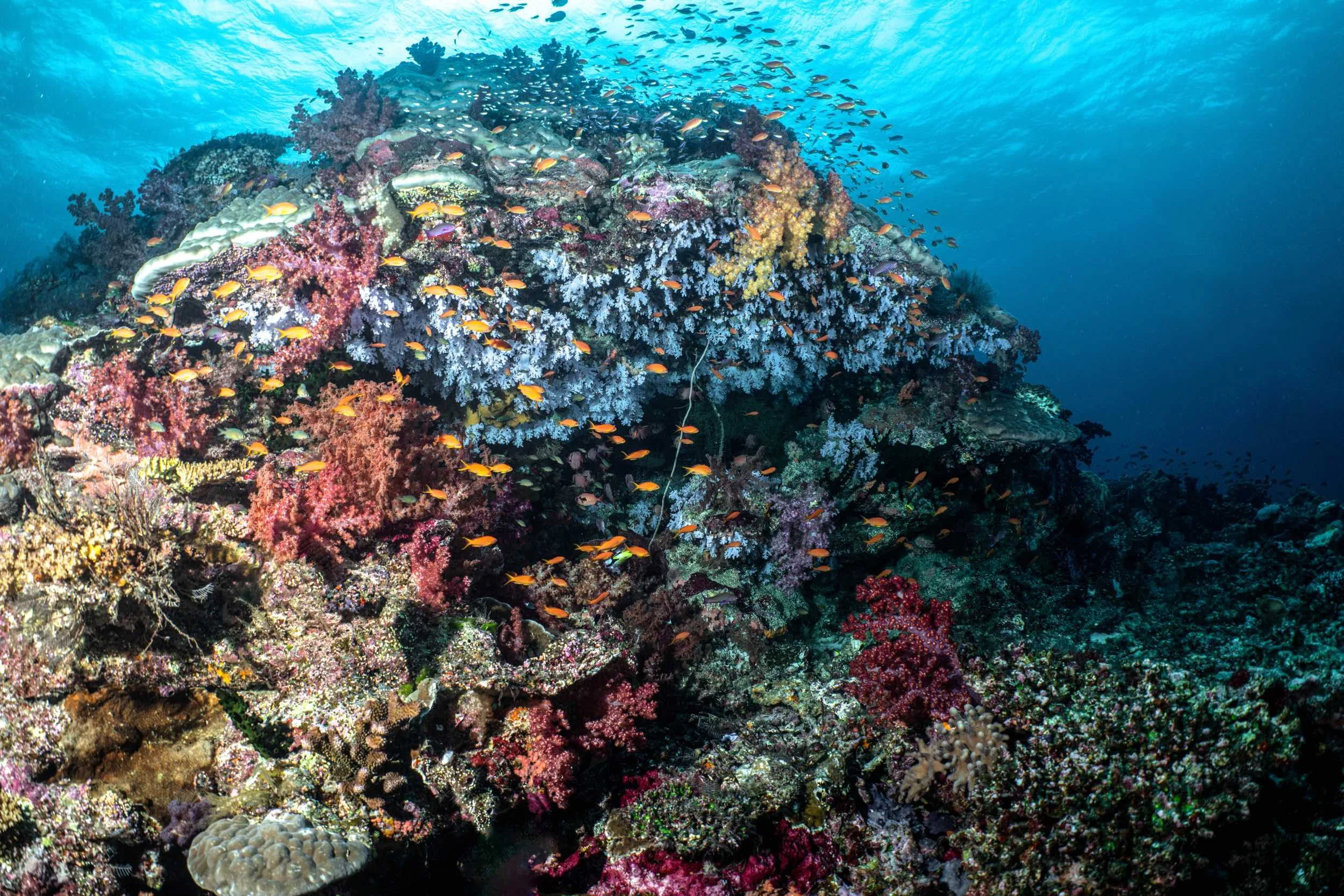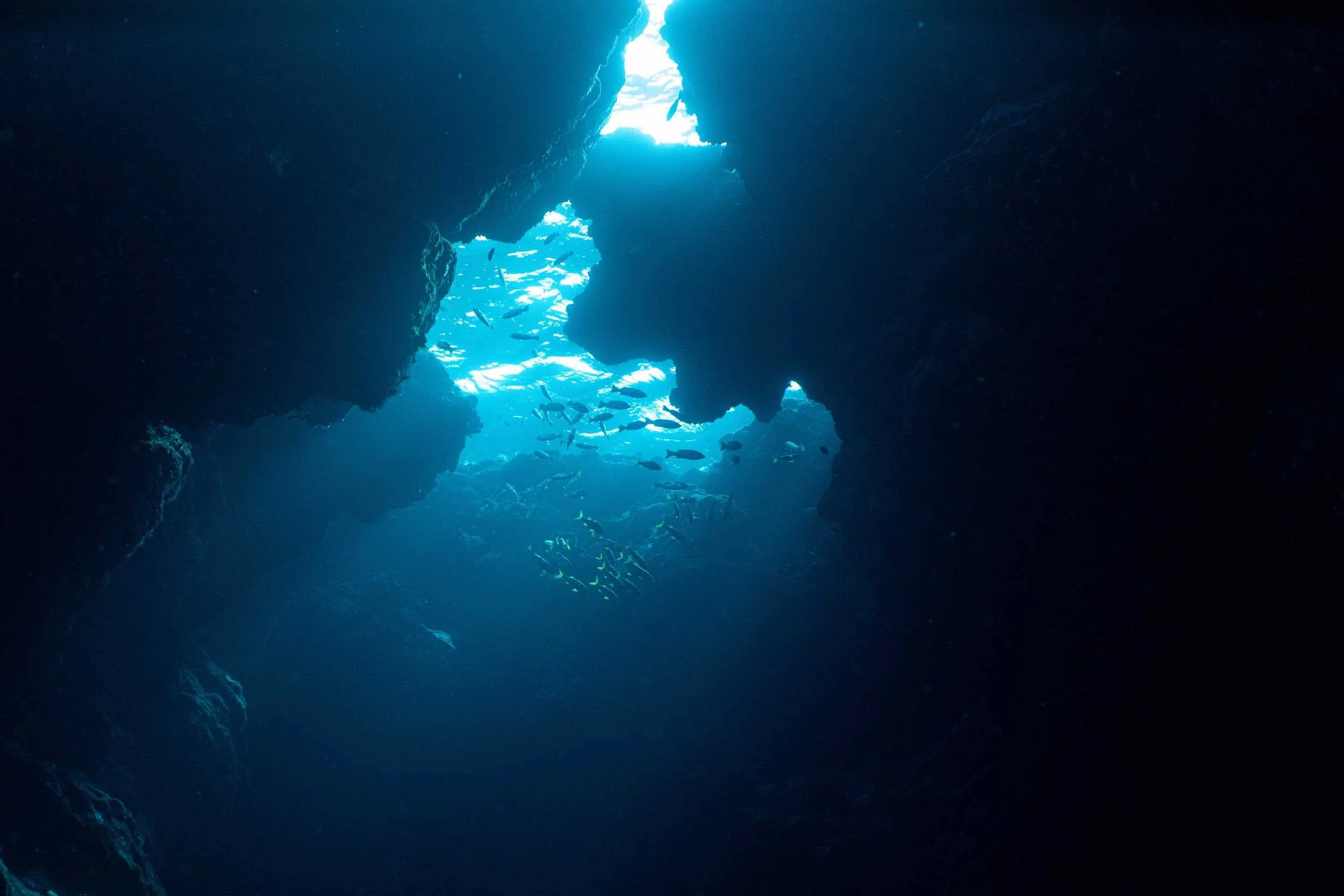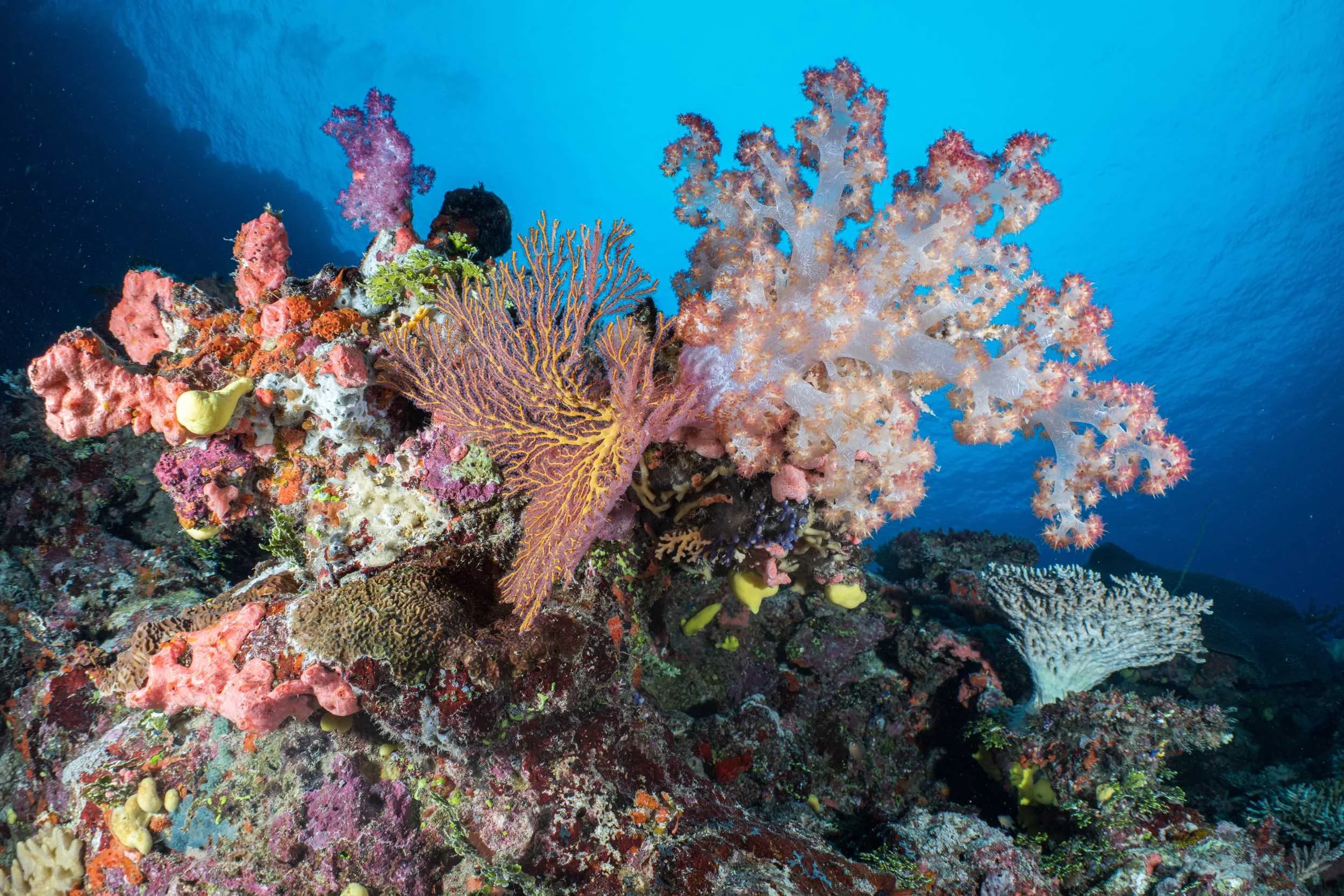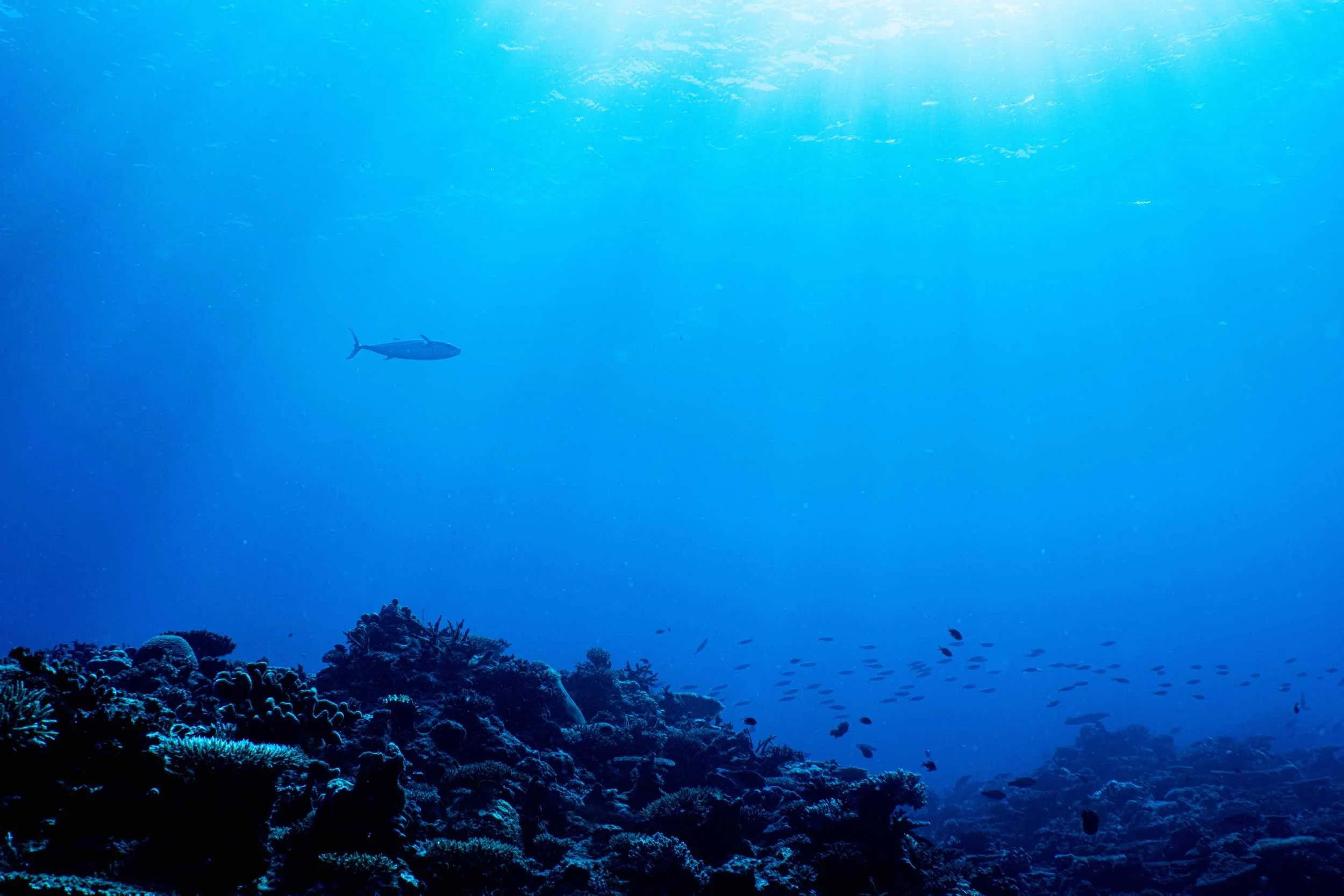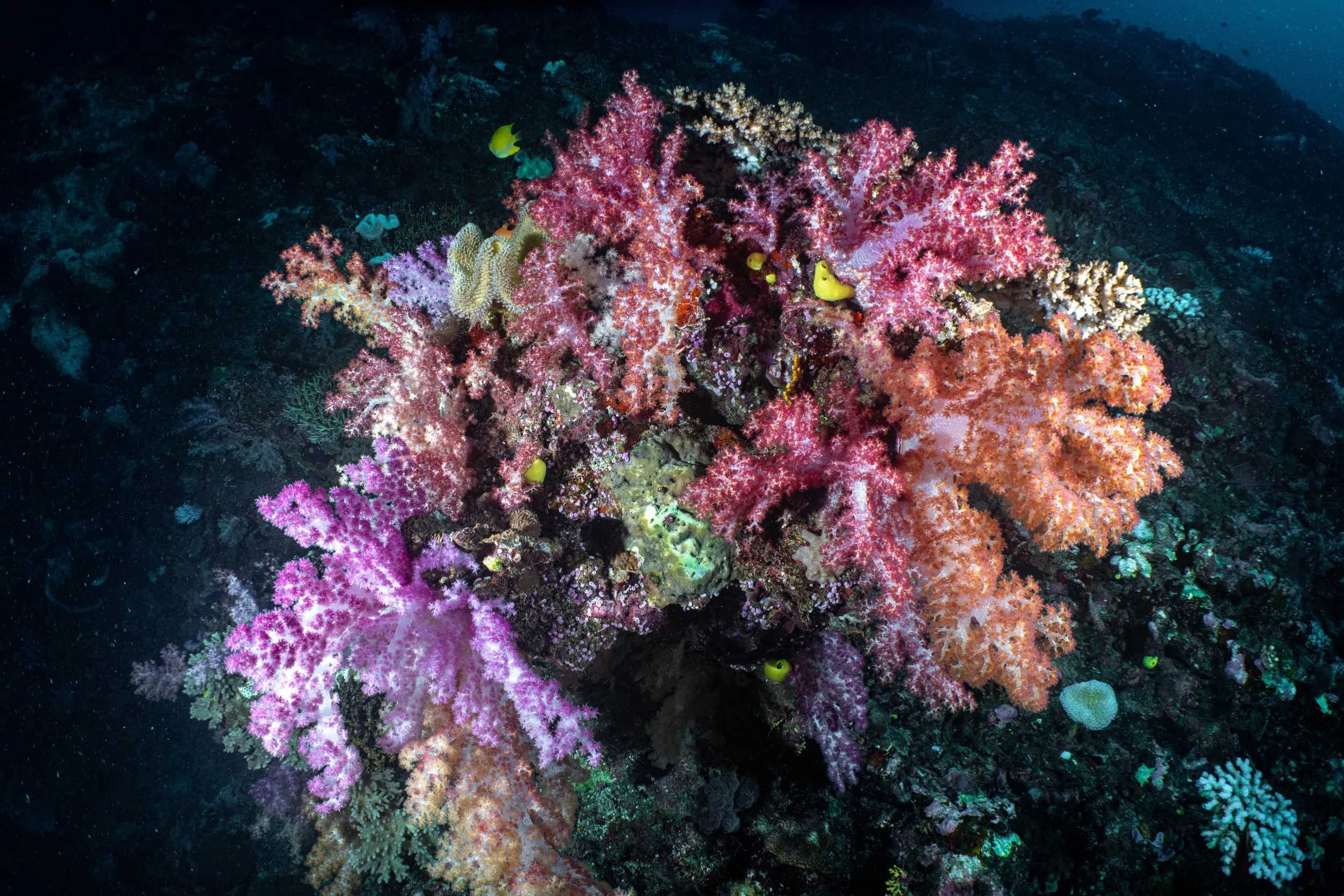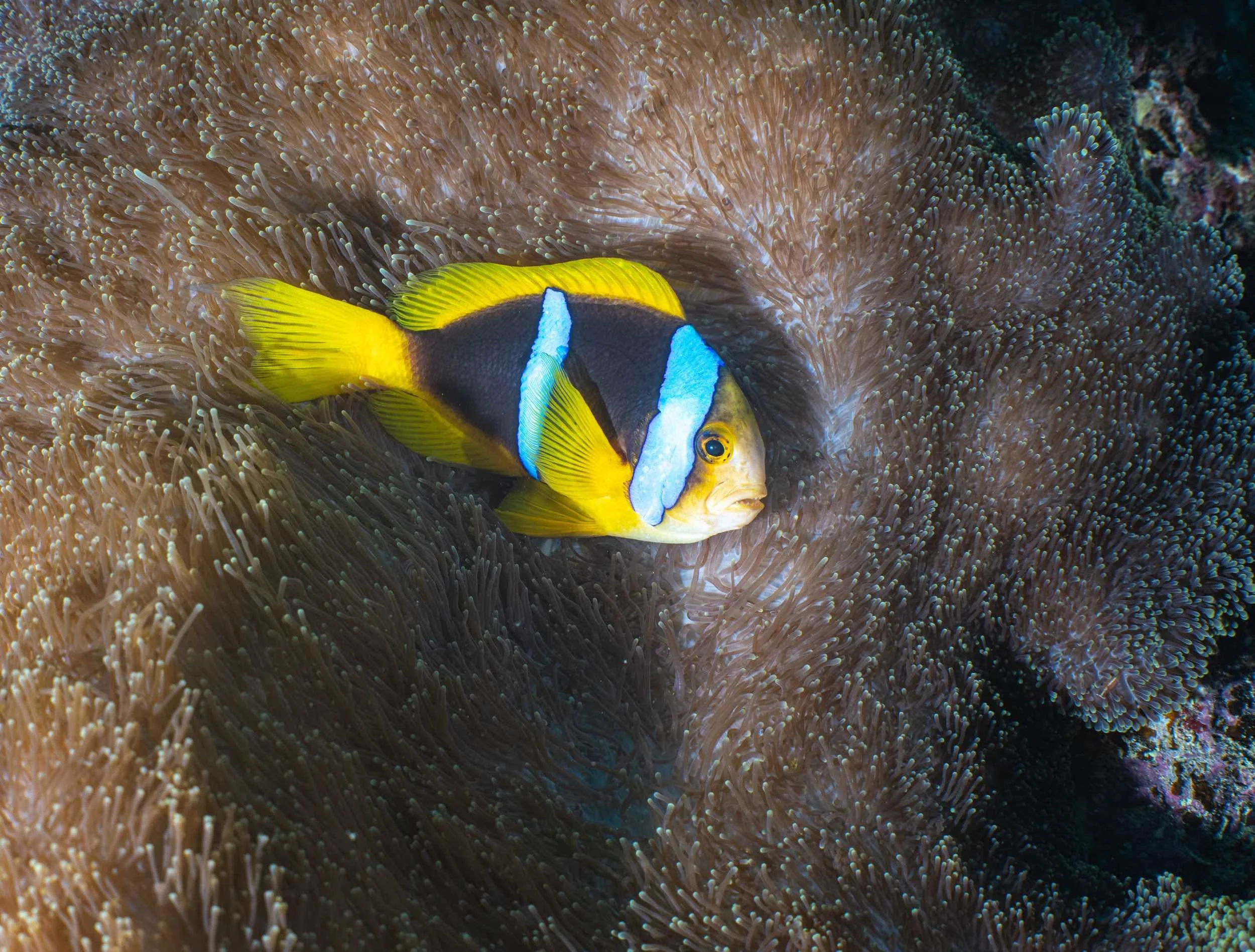A7RV and Nauticam Housing - Underwater Review
The A7RV is proof that there is always room for improvement. That’s because the A7RV improves upon just about every spec of its predecessor, except for the shared 61 megapixel sensor. In short, it’s an incredibly versatile camera that is suitable for a wide range of hybrid shooters, and does almost everything a bit better than the A7RIV did. While there are many great reviews of this camera already out there, this review focuses on use for underwater imaging, since at the moment, this is my camera of choice for a dedicated underwater rig. This review covers my use of the A7RV along with the Nauticam housing, Sea&Sea YS-D3II strobes, and WACP-C wide-angle conversion lens.
Sony A7RV
The A7RV, like the A7RIV before it, is capable of outstandingly detailed photos. One of the things that makes the camera great for underwater work is that it’s like having two cameras in one, a full-frame and an APS-C camera. If at any point it makes sense to crop an image for better framing, one can do so without penalty, and still have enough megapixels to match or beat some APS-C cameras. In a dynamic environment like underwater photography, this is a great asset, because it’s more forgiving to issues like drift from current, subject distance, etc., that affect composition.
Coral head and anemone fish. Sony A7RV, Nauticam WAPC-C, YS-D3 Strobes
The burst mode, which provides a decent 11 FPS mechanical on the highest setting, is unchanged from the prior A7RIV. Unlike some of the newer pro mirrorless bodies on the market which allow use of flash with electronic shutter, the A7RV is stuck with mechanical shutter and a non-stacked sensor. Notwithstanding, the camera never feels slow to respond during shooting, and is plenty quick and capable for underwater work. Especially noteworthy is the 1/250th flash sync speed, while not as fast as the A1’s 1/400th of a second rating, surpasses many other cameras in this category. This is a useful spec that makes it easier to stop motion with faster subjects like fish, lessen the effects of motion blur when working with a combination of ambient and artificial light, and also to lessen the effects of camera shake. This benefit is further boosted by the A7RV’s updated 8-stops of stabilization correction using In-Body Image Stabilization.
AF is one of the A7RV’s strong suits, and while the prior A7RIV’s AF was good, the new model’s AF is next-level, even in the underwater environment. I found Sony's Realtime Tracking Autofocus to seamlessly and accurately track moving subjects, making it an ideal choice for underwater shooting where changing the position of the autofocus square using the camera's joystick is often impractical. I found it easy to grab focus and then concentrate on composing the shot, much more so than other underwater setups I’ve used in the past. I also have a FN button set to toggle between RealTime Tracking and Wide modes, which makes it easy to cover situations where there is a fixed focal point or a more dispersed one like a school of fish. While not perfect, the AF generally seems to make good choices, in a way that other cameras I’ve used approach but do not quite match. I have not yet tried the animal detection modes, opting instead for Wide, Zone, and Realtime Tracking modes, which have suited most situations well. Animal detection is not yet advertised to work with fish.
Gold saddle goatfish. Sony A7RV, Nauticam WAPC-C, YS-D3 Strobes
Another design aspect that I really enjoy about the camera is the new flip screen. While not really useful underwater, the flip screen design finally provides a solution for everyone. Vloggers can flip the screen to their hearts content, and photographers can leave it in folded orientation and simply flip it up for low angle or tripod shots. When you want to protect the rear LCD, simply flip it closed. Every camera should have this design!
If there is any area where the new model lags its image playback performance. I don’t understand why, but Sony continues to have one of the most laggy playback interfaces in the industry, despite recently updating their interface with touch controls. It’s not to the point where it greatly detracts from the user experience, but handled side by side with a Nikon or Canon, the slight delay is obvious when pinching to zoom images or scrolling through multiple images. I find this annoying, and puzzling for a 2022 model, but nonetheless forgivable, because it doesn’t really affect the final output or shooting experience.
By and large, the camera body is a joy to use both topside and in the underwater environment, inspiring confidence with its great autofocus system and incredibly detailed image output. I also appreciate the level of customizability, one of Sony’s strong suits, which makes it easy to dial in the camera for the underwater use case.
Nauticam A7RV Housing
The Nauticam A7RV housing is a remarkable piece of equipment. One of the first aspects that caught my attention was the Nauticam A7RV's solid build quality. It’s hard to appreciate the degree of craftsmanship and meticulous attention to detail of a Nauticam housing until you have one in hand. Made from a robust aluminum alloy, it offers great sturdiness, and with the integrated vacuum system, I always felt the camera was secure, even in challenging underwater conditions. It gives peace of mind that the gear is well-protected against water ingress and accidental bumps and splashes that are all too common on while on a busy dive boat.
Coral bommie, Fiji. Sony A7RV, Nauticam WAPC-C, YS-D3 Strobes
But what truly sets the Nauticam A7RV housing apart is its intuitive controls, designed with underwater photographers in mind. Seamlessly blending functionality and simplicity, the ergonomics of this housing make it a breeze to operate, which allowed me to focus on capturing the scene rather than fumbling controls. Once you use the controls on the Nauticam housing, it’s hard to imagine using anything else. In some ways the controls on the housing felt even more intuitive than the bare camera - for example, I really enjoyed how easy it was to use the finger levers for playback, AF-ON, and shutter. The well-positioned buttons and dials offer quick and effortless access to essential functions, providing a smooth shooting experience even in the depths where time is of the essence.
Furthermore, the housing seamlessly integrates with the Sony Alpha A7RV camera, unlocking essentially all of its topside functions underwater. The reliable and responsive controls provide easy access to aperture, shutter speed, focus, and other critical camera settings. The housing features straightforward installation, allowing for quick camera setup and seamless battery and memory card changes. Additionally, the large and clear (optional) 0.8x angle viewfinder provides excellent visibility and ergonomics, even in challenging lighting conditions - though it does take some getting used to.
After just a few uses, I had the housing setup, pre-dive checks, and operation down to muscle memory. What seemed intimidating at first proved straightforward with the help of Nauticam’s instructions and guides. I had zero problems after doing 3 dives a day for over a week by simply following the manufacturer’s notes.
One other consideration with this housing setup is that all that imaging performance comes at a cost - size and weight. The housing, lens, lanyard, floats, and strobes weigh 19 pounds without the camera and batteries. The lanyard makes deck handling easy and the floats make the housing near neutral and effortless to use underwater, but nonetheless, it is a chunk to handle topside.
Nauticam WACP-C Lens
One of the main reasons I chose Sony for the underwater rig was the ability to use Nauticam’s WACP-C lens and the Sony FE 28-60 F/4-5.6. It seems counterintuitive that a relatively “cheap lens” behind a wet lens would outperform a more expensive rectilinear lens behind a classic dome port. However, based on Nauticam’s R&D and user testing, the is indeed the case. Nauticam claims this lens sits between their smaller WWL-1B wet lens and the much larger WACP-1 in terms of sharpness and corner performance, two key elements of a good underwater optical system. So, to avoid needing massive dome ports and to get a bit better performance than the WWL-1B, I opted for this solution. While the 28-60 falls under the “affordable kit zoom” category, its performance behind the WACP-C surprises with sharpness that exceeds expectations. For underwater photography, pairing the Sony 28-60 lens with Nauticam's wide-angle wet lens allows for wide-angle shots with excellent clarity and detail and good corner performance even with lower F-stops. The WACP-C clearly shines in this area, and I appreciated being able to open up the aperture when lighting was less than ideal. Also, the 28-60 can be used with a standard port for subjects like fish portraits, or with macro diopters like the CMC-1 or CMC-2.
Cavern shot with filtered light. Sony A7RV, Nauticam WAPC-C, YS-D3 Strobes
In terms of use case, the combination of the Sony A7RV camera, the versatile 28-60mm lens, and the WACP-C expands shooting possibilities, providing a wider range of focal lengths to capture both close-up fish portraits and all-encompassing reef scenes ranging from a useful 69 degrees to 130 degrees diagonal.
Despite its many advantages, it would be remiss not to mention that the WACP-C does have a slight drawback: its weight. Due to its build quality and physics, it does come with a little heft. This factor necessitates some consideration during transport, especially with increasingly strict baggage rules. However, with proper planning and care, this minor issue can be overcome and should not deter serious underwater photographers from investing in this exceptional lens. For travel, I placed the lens in carry-on luggage with a DOMKE wrap, and it was largely a non-issue. The lens also comes with a large lens cap, which I stuffed in tech shorts during the dive and re-installed before climbing back aboard, and also during transport.
The other limitation of this setup is that it can’t cover all use cases, and unlike some other options like Nauticam’s WWL-1B or MWL-1, you cannot shoot macro and wide angle on the same dive with this rig. While it is possible to focus almost up to the lens port to capture smaller subjects, it will not replace a macro setup nor a close-focus wide angle setup. This rig also does not go beyond 130 degrees diagonal, which is possible with fisheye lenses. As the lens is designed for below water use and has trouble focusing above water, it is also not the right choice for split shots.
Notes on the YS-D3 Strobes
I found the Sea & Sea YS-D3II strobes to provide good coverage and brought back life to the scenes, however, I did trigger the overheat circuit on more than one occasion when used at the highest flash setting with repeated flashes (this is by design to protect the strobe circuitry). When the overheat circuit triggers the strobe will no longer flash for a couple minutes. To overcome this limitation, I recommend getting closer to the subject or utilize lower flash power settings for optimal performance. This, however, only goes so far if the goal is to illuminate large scenes. Triggering the overheating circuit can also be avoided by shooting slower bursts which allows the flash more time to recycle and cool down. This is just something to be aware of.
Moreover, while the battery life of the YS-D3II strobes is generally satisfactory for most underwater photography scenarios, it fell short when trying to illuminate large reef scenes over multiple dives, so swapping batteries during the surface interval is recommended.
Overall, I thought the strobes provided even lighting, good coverage, and good color, and apart from the sensitive overheat circuit issue, I don’t have any major complaints.
Reef scene on Fiji’s Rainbow Reef. Sony A7RV, Nauticam WAPC-C, YS-D3 Strobes
Conclusion
In conclusion, the A7RV camera truly stands out as an exceptional choice for photographers seeking top-notch performance in underwater settings. The autofocus system never disappointed, and Sony’s Realtime Tracking AF mode is not only the best in the business (in my view), it is an excellent choice for a lot of underwater scenarios. Moreover, the A7RV's excellent dynamic range allows for beautifully balanced exposures and leverage for editing in post. The sensor does a great job preserving the subtle nuances of light and shadow even in challenging lighting conditions.
In terms of speed, I found the A7RV "fast enough" for the use case underwater. Whether it's capturing swift-moving creatures or freezing the action in fast-paced environments, this camera delivers the responsiveness needed to seize the perfect moment.
Complementing the exceptional camera body is the Nauticam housing, which is impeccably constructed. The Nauticam housing provides a secure and comfortable grip, ensuring peace of mind while diving. Its user-friendly design allows for easy access to controls and functionalities, enhancing the overall shooting experience.
While the WACP-C is not the most compact wet lens solution for a full-frame underwater setup (for example, compared to the WWL-1B), what it does offer is exceptional image quality. This lens is still a heavy and substantial piece of equipment that must be accounted for while traveling.
Overall, I found the combination of the A7RV camera, Nauticam housing, and WACP-C lens excellent to use underwater. This powerful trio provides photographers with a great rig to capture detailed and immersive images beneath the waves. For the professional or an avid enthusiast, this equipment is sure to deliver outstanding results.
The “Great White Wall” in Fiji . Sony A7RV, Nauticam WAPC-C, YS-D3 Strobes
Tuna in the blue. Sony A7RV, Nauticam WAPC-C, YS-D3 Strobes
Shrimp during a night dive. Sony A7RV, Nauticam WAPC-C, YS-D3 Strobes
Reef scene with scuba diver. Sony A7RV, Nauticam WAPC-C, YS-D3 Strobes
Stonefish. Sony A7RV, Nauticam WAPC-C, YS-D3 Strobes
Colorful gorgonian corals. Sony A7RV, Nauticam WAPC-C, YS-D3 Strobes
Anemone and fish . Sony A7RV, Nauticam WAPC-C, YS-D3 Strobes


